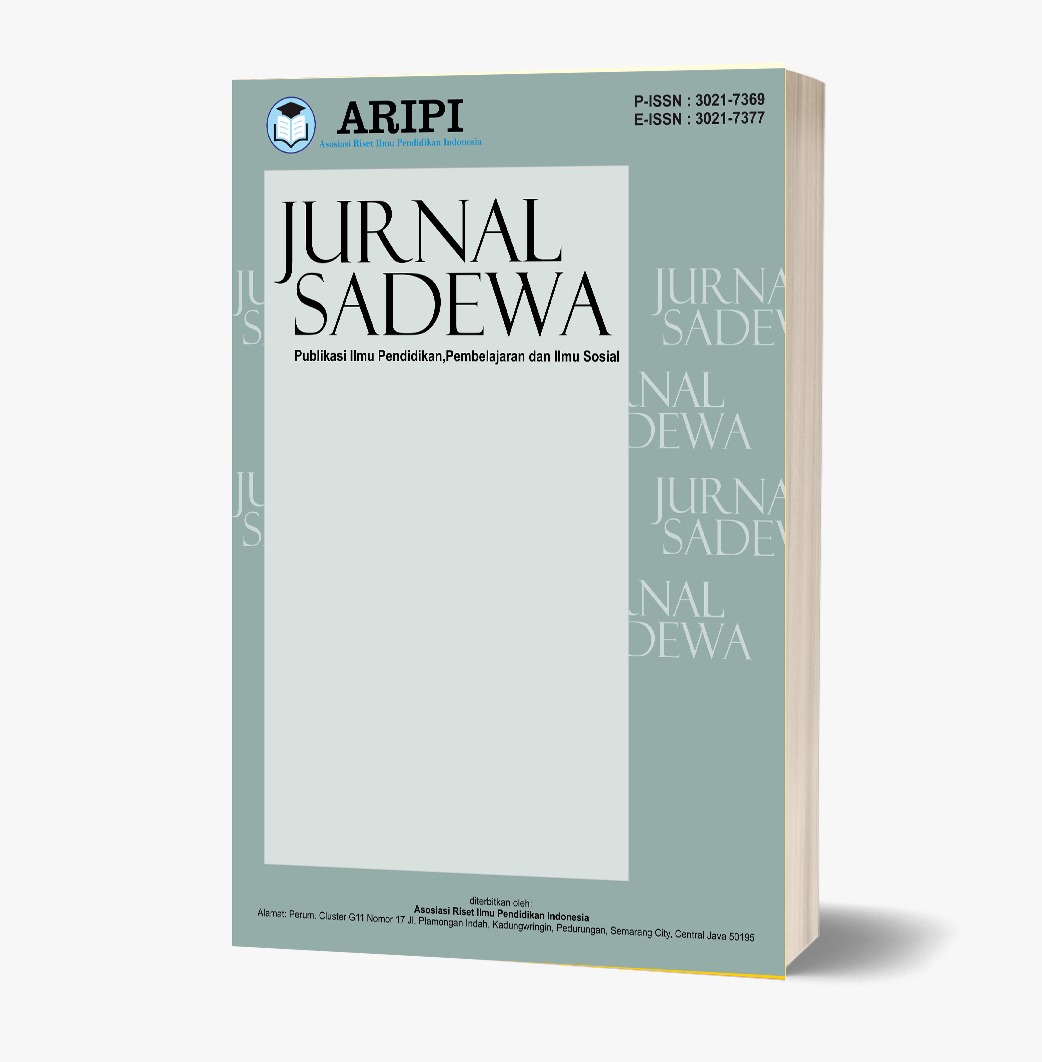Strategi Pendidik di SLB Negeri Sumut dalam Membangun Motivasi Belajar Siswa Tunagrahita
DOI:
https://doi.org/10.61132/sadewa.v3i3.1999Keywords:
Intellectual disabilities, Learning motivation, Learning strategies, Special educationAbstract
This study analyzes the strategies used by educators to improve learning motivation of mentally retarded students at SLB Negeri North Sumatra. The method used is descriptive qualitative, with data collection through observation, semi-structured interviews, and documentation. The subjects of the study consisted of mentally retarded class teachers and seven students with varying levels of difficulty. The results showed that students' learning motivation varied, with some students showing enthusiasm for fun and relevant activities. The five main strategies applied by teachers include: (1) individual and contextual learning strategies with an emphasis on the learning by doing method, (2) the use of varied learning media such as visual media, flashcards, learning videos, and interactive applications, (3) giving rewards in the form of verbal praise and small prizes and proportional educational punishments, (4) creating a safe, comfortable, and supportive learning environment with positive communication, and (5) active cooperation with parents through communication. The main supporting factors are teachers, a school environment, and good relationships with parents, while inhibiting factors include low parental awareness and students' socio-economic conditions. The success of the strategy can be seen from the increase in more active student behavior. This study concludes that the learning motivation of mentally retarded students can be increased through an adaptive approach that involves all parties.
Downloads
References
Clarisa, A., Putri, M., & Santoso, R. (2023). Pendekatan pembelajaran untuk siswa berkebutuhan khusus: Studi kasus di SLB. Jurnal Pendidikan Khusus, 12(1), 45–58.
Clarisa, C., Sari, M. N., & Handayani, T. (2023). Strategi pembelajaran anak tunagrahita melalui experiential learning di Sekolah Luar Biasa. Jurnal Pendidikan Khusus, 19(2), 145–157.
Creswell, J. W. (2018). Research design: Qualitative, quantitative, and mixed methods approaches (5th ed.). Sage Publications.
Esterberg, K. G. (2002). Qualitative methods in social research. McGraw-Hill.
Fitriana, A. (2012). Peningkatan motivasi belajar anak tunagrahita melalui keterlibatan orang tua dalam pembelajaran. Jurnal Pendidikan Khusus, 8(1), 55–67.
Fitriana, D. (2012). Peran orang tua dalam pendidikan. [Informasi penerbit tidak tersedia – mohon dilengkapi].
Indrawati, T. (2021). Pelaksanaan pembelajaran anak tunagrahita: Implementasi of mental retardation children learning. [Informasi penerbit tidak tersedia – mohon dilengkapi].
Kuswandi, D., & Mafruhah, L. (2022). Lingkungan belajar kondusif untuk anak tunagrahita. Jurnal Pendidikan Inklusif, 10(3), 150–162.
Lucky, Razela, Vania, & Nurul. (2022). Analisis strategi pembelajaran bagi anak tunagrahita di SLB B-C Flora Indonesia. Prosiding Seminar Nasional Ilmu Pendidikan dan Multidisiplin V. [Informasi penerbit dan halaman tidak tersedia – mohon dilengkapi].
Megandari, A. (2016). Pemberian reward dan punishment dalam meningkatkan motivasi belajar siswa tunagrahita. Jurnal Psikologi Pendidikan, 8(1), 65–72.
Mumpuniarti, R. (2021). Pembelajaran akademik bagi tunagrahita. UNY Press.
Rahmi, S., Lestari, Y., & Fauziah, N. (2024). Penggunaan media pembelajaran interaktif pada siswa berkebutuhan khusus. Jurnal Teknologi Pendidikan, 15(2), 89–102.
Rahmi, Y., Lestari, R., & Fauziah, N. (2024). Pemanfaatan media Wordwall dalam meningkatkan motivasi belajar siswa tunagrahita. Jurnal Teknologi Pendidikan Inklusif, 6(1), 33–44.
Spradley, J. P. (2016). Participant observation. Waveland Press.
Sugiyono. (2020). Metode penelitian kualitatif. Alfabeta.
Downloads
Published
How to Cite
Issue
Section
License
Copyright (c) 2025 Jurnal Sadewa : Publikasi Ilmu Pendidikan, Pembelajaran dan Ilmu Sosial

This work is licensed under a Creative Commons Attribution-ShareAlike 4.0 International License.







